
Bernard stiegler (1952-2020)
LINKS Series
Note pour la dédicace de la revue Links à Bernard Stiegler.

LINKS Series
Note pour la dédicace de la revue Links à Bernard Stiegler.
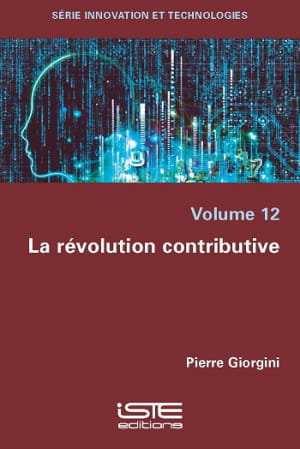
La révolution contributive
Postface de La révolution contributive, 2022, Pierre Giorgini, ISTE Editions
La révolution contributive résulte du passage rapide à une conception dominante des systèmes (techniques, sociaux, organisationnels, culturels, etc.) où chacun des composants des systèmes co-élabore la performance du tout, en dehors de tout pilotage et contrôle centralisé et extérieur au système. Elle réinvente fondamentalement la relation sujet-objet.La révolution contributive en cours est globale et profonde. Elle apparaît comme une solution possible à la crise économique, écologique et politique qui frappe les sociétés contemporaines, elle concerne tout le champ épistémologique, des sciences jusqu’aux organisations sociales (épistémè).
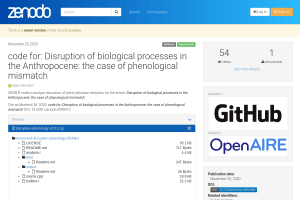
CRAN R code to analyze disruption of plant-pollinator networks for the article: Disruption of biological processes in the Anthropocene: the case of phenological mismatch.
CRAN R code to analyze disruption of plant-pollinator networks for the article: Disruption of biological processes in the Anthropocene: the case of phenological mismatch

Revue d’histoire des sciences
L’invention et le développement des ordinateurs a ouvert de nouvelles possibilités pour la modélisation. En physique, l’existence de théories mathématisées
L’invention et le développement des ordinateurs a ouvert de nouvelles possibilités pour la modélisation. En physique, l’existence de théories mathématisées permet d’utiliser l’ordinateur pour calculer des solutions approchées à des problèmes déjà bien circonscrits théoriquement et épistémologiquement. En biologie, par contre, il n’existe pas de théorie jouant ce rôle épistémologique, et l’informatique a permis l’émergence de pratiques de modélisation combinant plusieurs cadres mathématiques. L’ouvrage de Franck Varenne porte sur ces pratiques novatrices, leur histoire et leur épistémologie, à travers le cas des simulations de morphogenèse d’arbres et plus généralement de plantes.
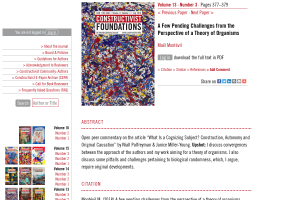
Constructivist Foundations
I discuss convergences between the approach of N. Palfreyman and J. Miller-Young and my work aiming for a theory of organisms, in particular on randomness.
Open peer commentary on the article “What Is a Cognizing Subject? Construction, Autonomy and Original Causation” by Niall Palfreyman & Janice Miller-Young. http://constructivist.info/13/3/362.palfreyman Upshot: I discuss convergences between the approach of the authors and my work aiming for a theory of organisms. I also discuss some pitfalls and challenges pertaining to biological randomness, which, I argue, require original developments.
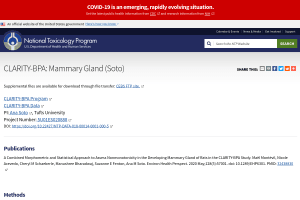
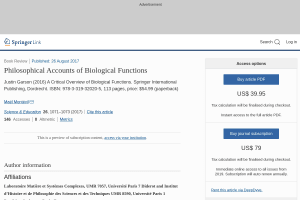
Science & Education
Review of "A critical overview of biological functions" by Justin Garson (2016). I focus on the etiological and the organizational accounts of functions.
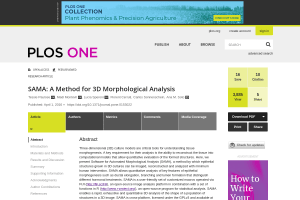
PLOS ONE
Documentation for Software for Automated Morphological Analysis, a method by which epithelial structures grown in 3D cultures can be imaged, reconstructed and analyzed.
Three-dimensional (3D) culture models are critical tools for understanding tissue morphogenesis. A key requirement for their analysis is the ability to reconstruct the tissue into computational models that allow quantitative evaluation of the formed structures. Here, we present Software for Automated Morphological Analysis (SAMA), a method by which epithelial structures grown in 3D cultures can be imaged, reconstructed and analyzed with minimum human intervention. SAMA allows quantitative analysis of key features of epithelial morphogenesis such as ductal elongation, branching and lumen formation that distinguish different hormonal treatments. SAMA is a user-friendly set of customized macros operated via FIJI (http://fiji.sc/Fiji), an open-source image analysis platform in combination with a set of functions in R (http://www.r-project.org/), an open-source program for statistical analysis. SAMA enables a rapid, exhaustive and quantitative 3D analysis of the shape of a population of structures in a 3D image. SAMA is cross-platform, licensed under the GPLv3 and available at http://montevil.theobio.org/content/sama.
Keywords: Open source software, Image analysis, Ellipsoids, Morphogenesis, Computer software, Morphometry, Image processing, Branching morphogenesis